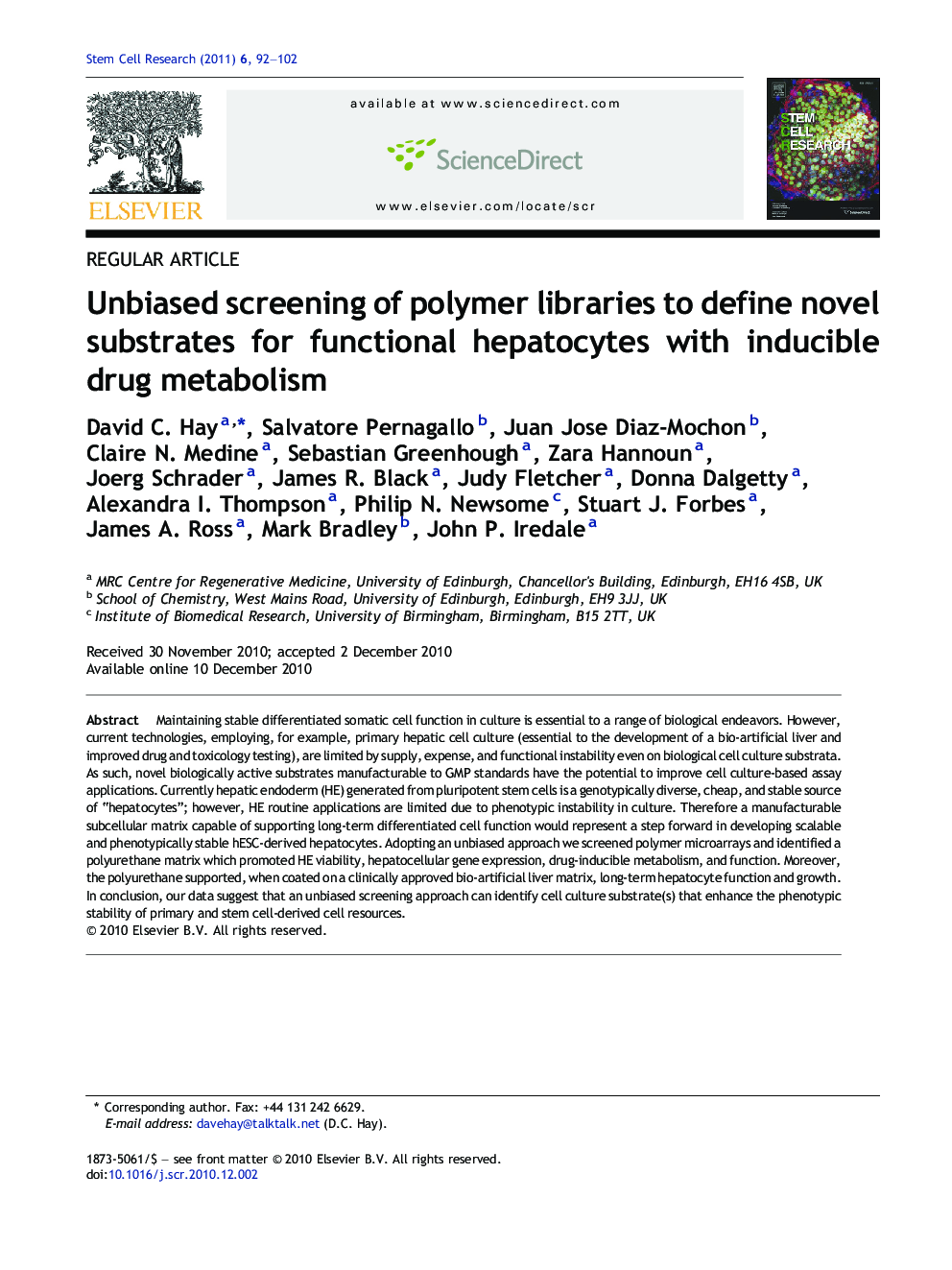| Article ID | Journal | Published Year | Pages | File Type |
|---|---|---|---|---|
| 2094345 | Stem Cell Research | 2011 | 11 Pages |
Maintaining stable differentiated somatic cell function in culture is essential to a range of biological endeavors. However, current technologies, employing, for example, primary hepatic cell culture (essential to the development of a bio-artificial liver and improved drug and toxicology testing), are limited by supply, expense, and functional instability even on biological cell culture substrata. As such, novel biologically active substrates manufacturable to GMP standards have the potential to improve cell culture-based assay applications. Currently hepatic endoderm (HE) generated from pluripotent stem cells is a genotypically diverse, cheap, and stable source of “hepatocytes”; however, HE routine applications are limited due to phenotypic instability in culture. Therefore a manufacturable subcellular matrix capable of supporting long-term differentiated cell function would represent a step forward in developing scalable and phenotypically stable hESC-derived hepatocytes. Adopting an unbiased approach we screened polymer microarrays and identified a polyurethane matrix which promoted HE viability, hepatocellular gene expression, drug-inducible metabolism, and function. Moreover, the polyurethane supported, when coated on a clinically approved bio-artificial liver matrix, long-term hepatocyte function and growth. In conclusion, our data suggest that an unbiased screening approach can identify cell culture substrate(s) that enhance the phenotypic stability of primary and stem cell-derived cell resources.
